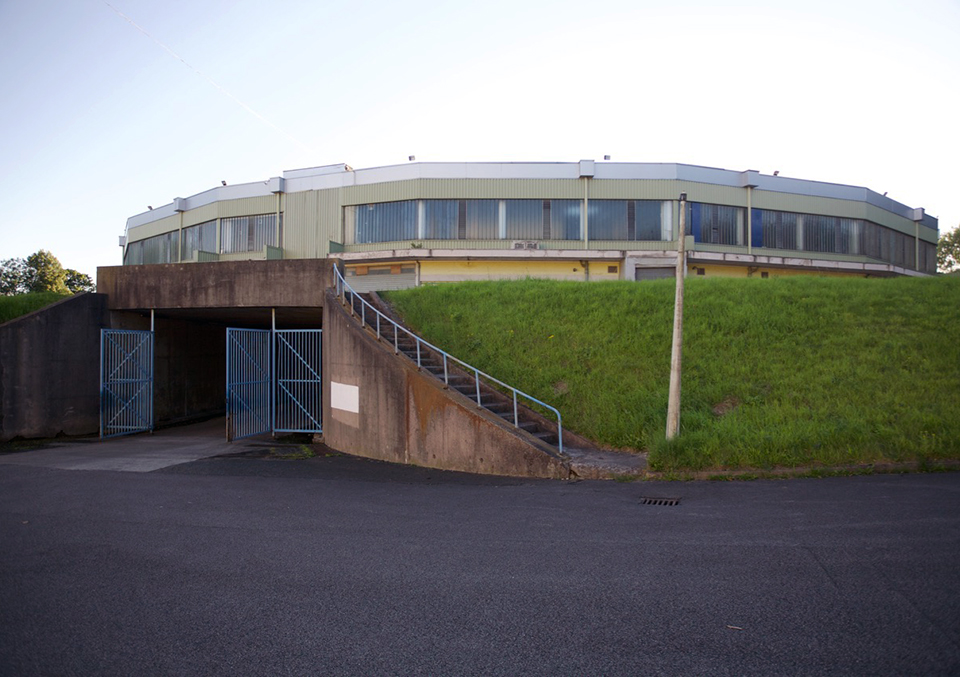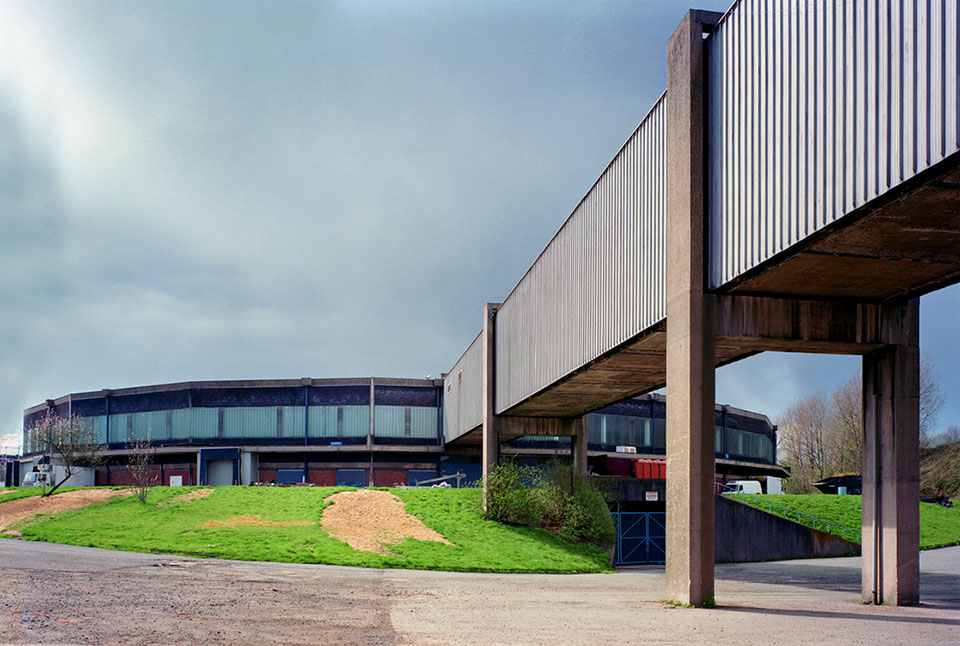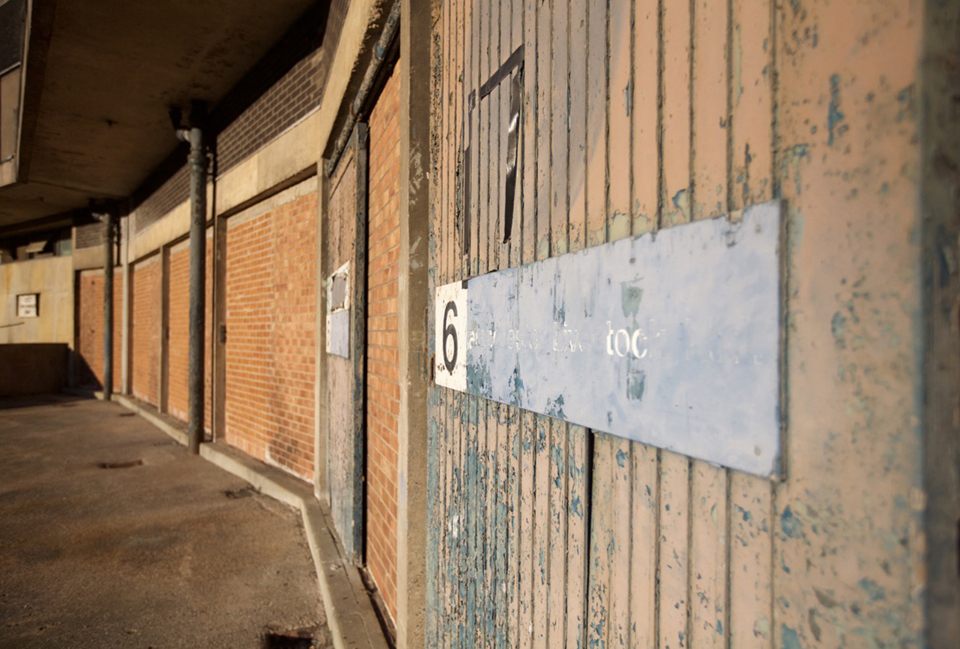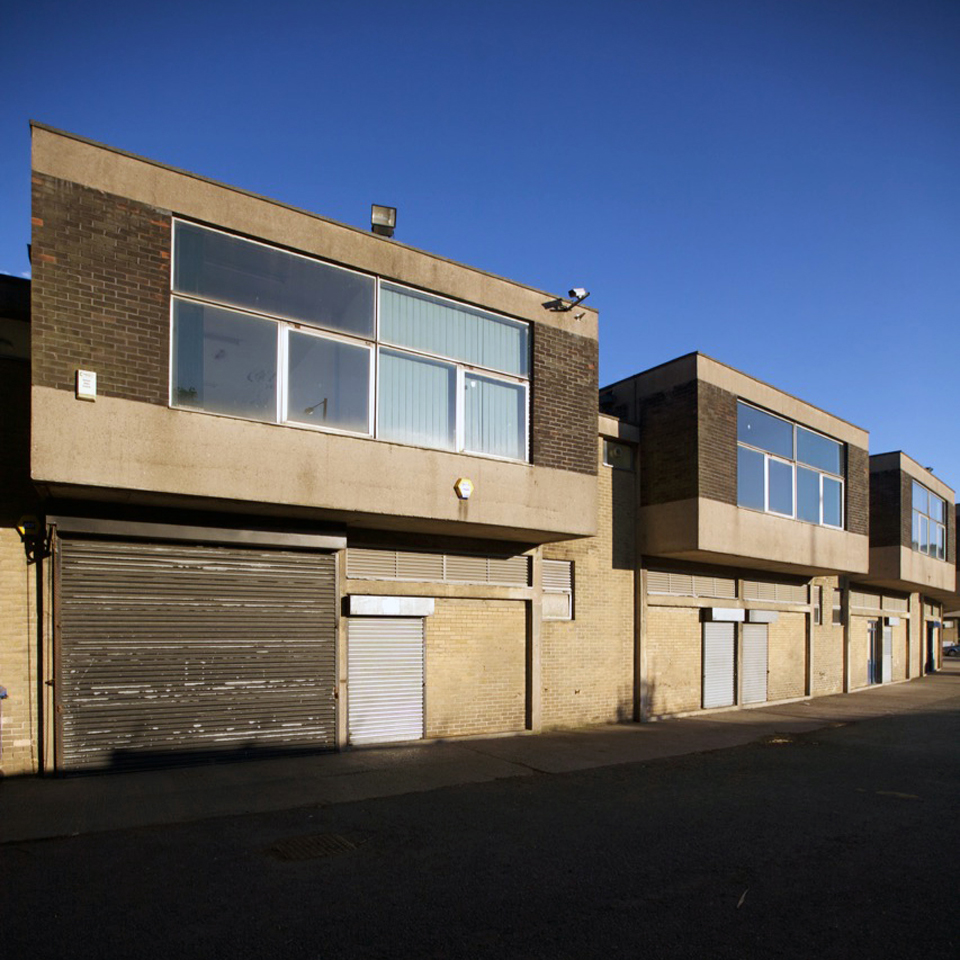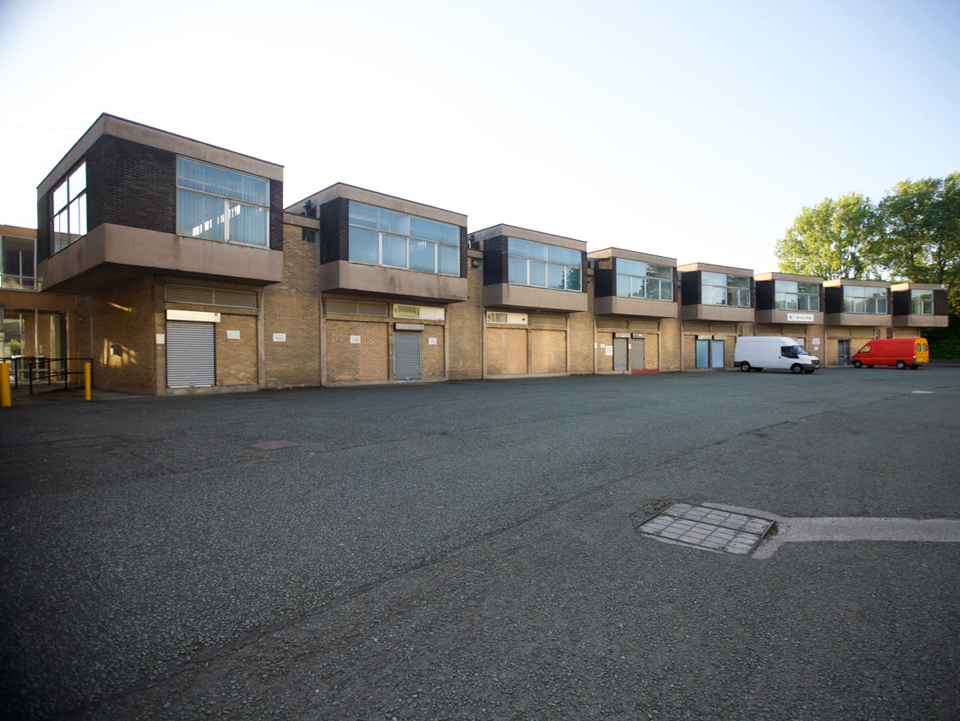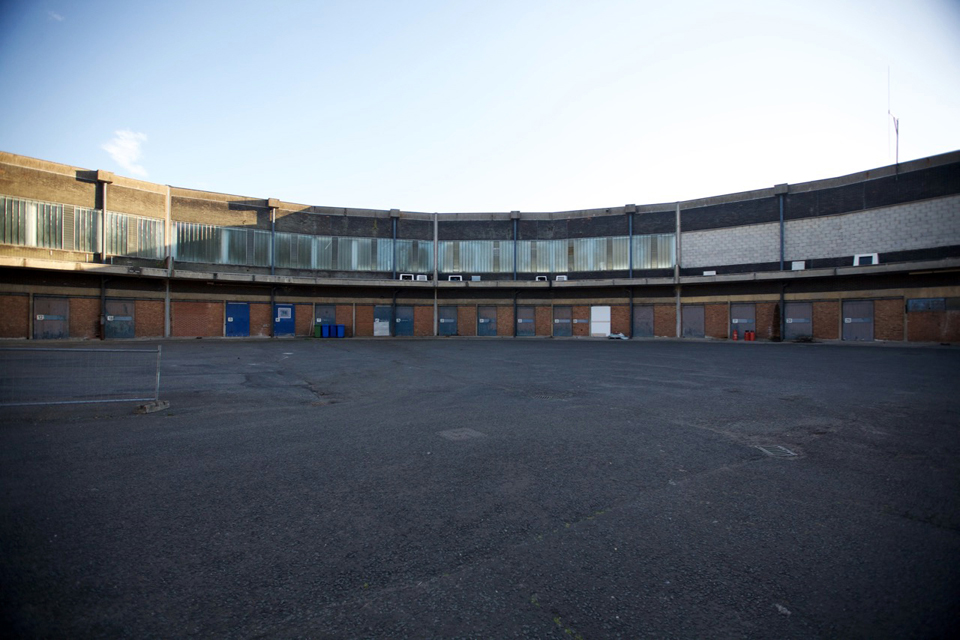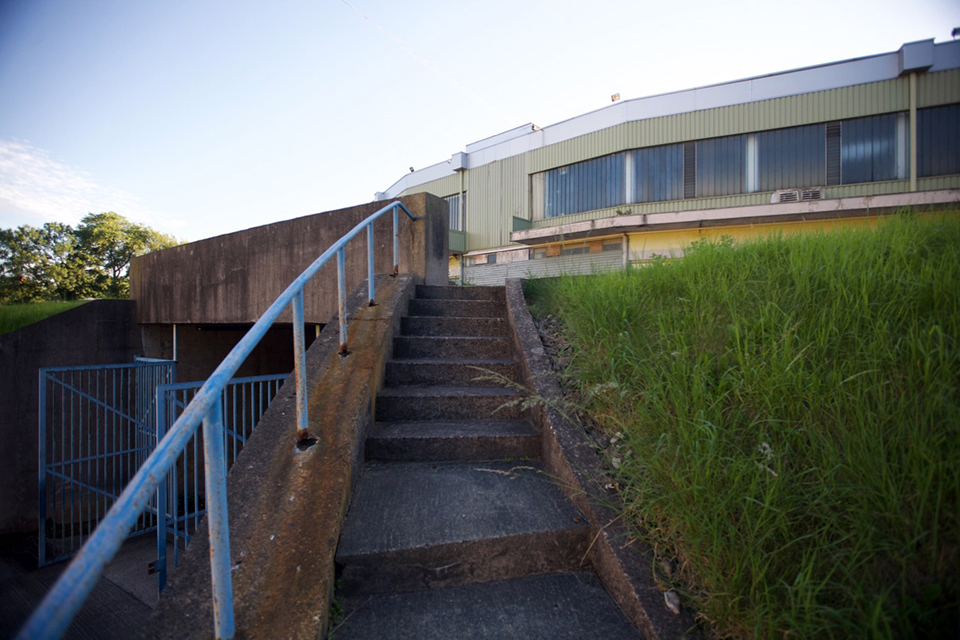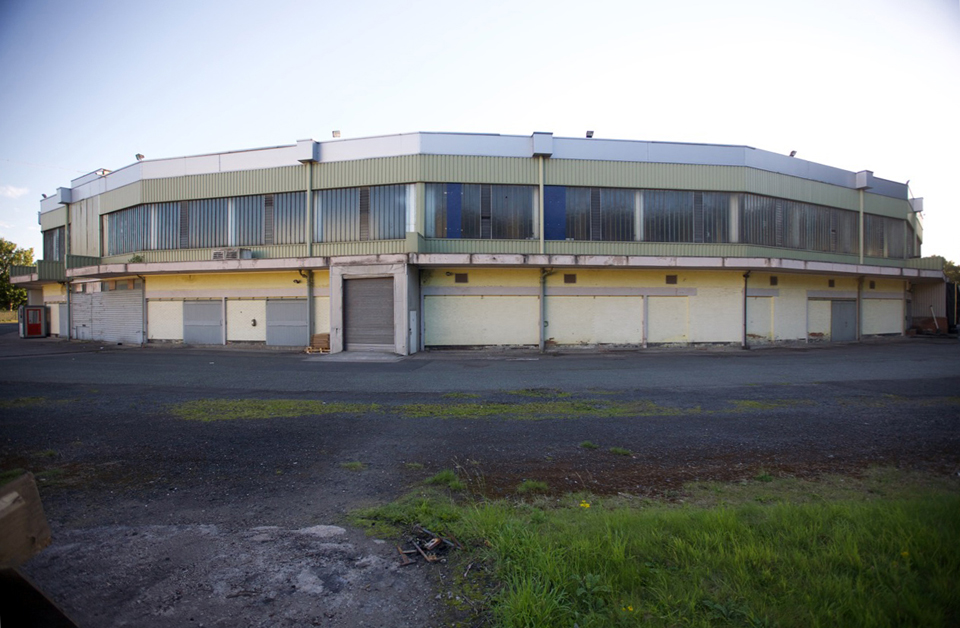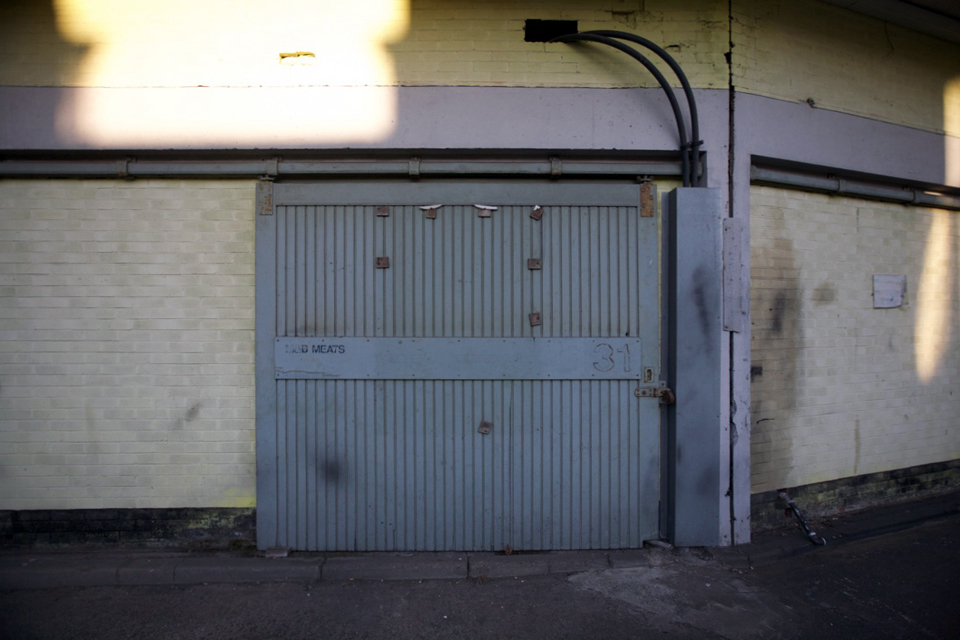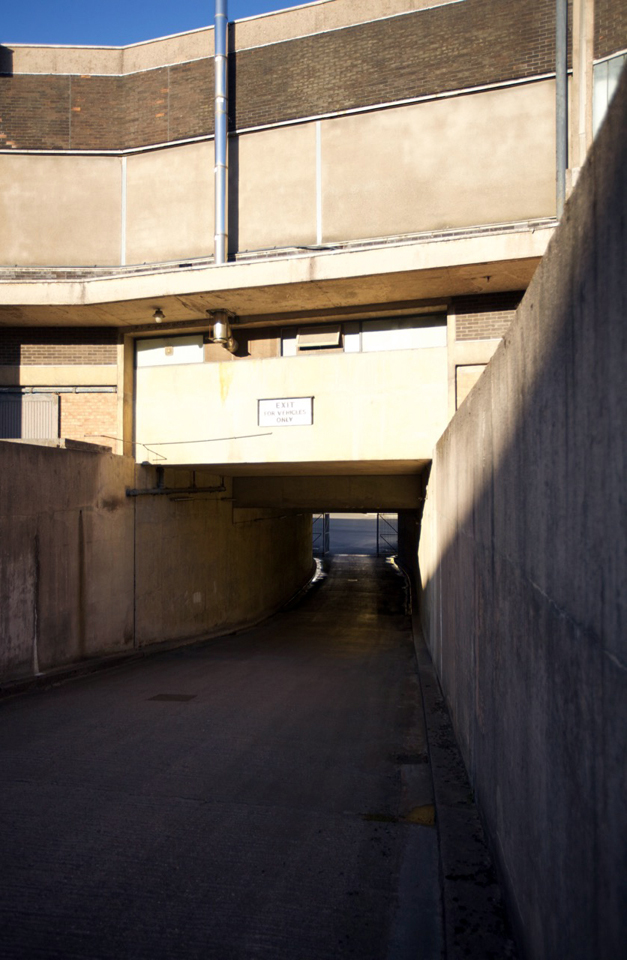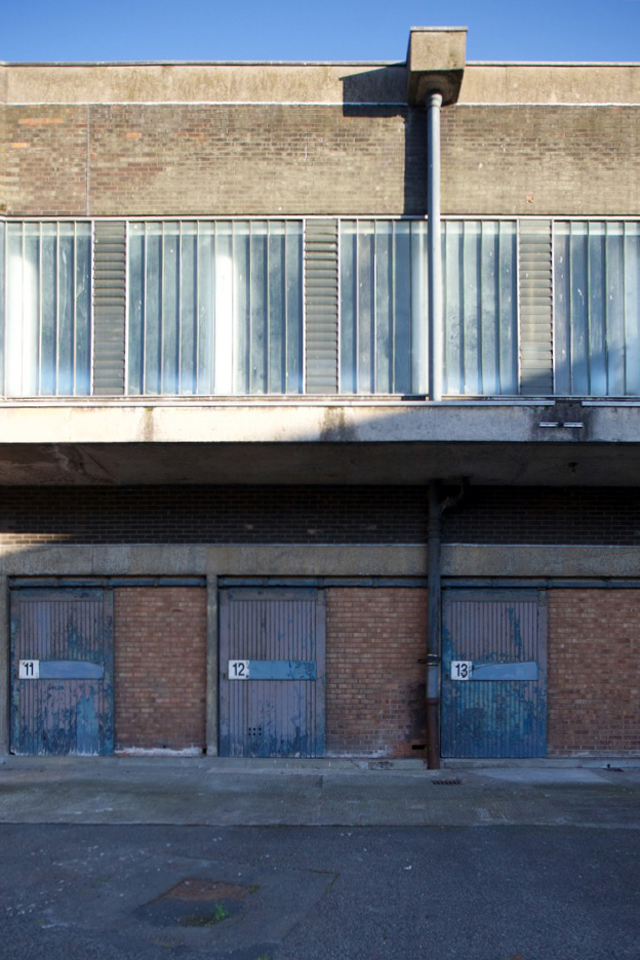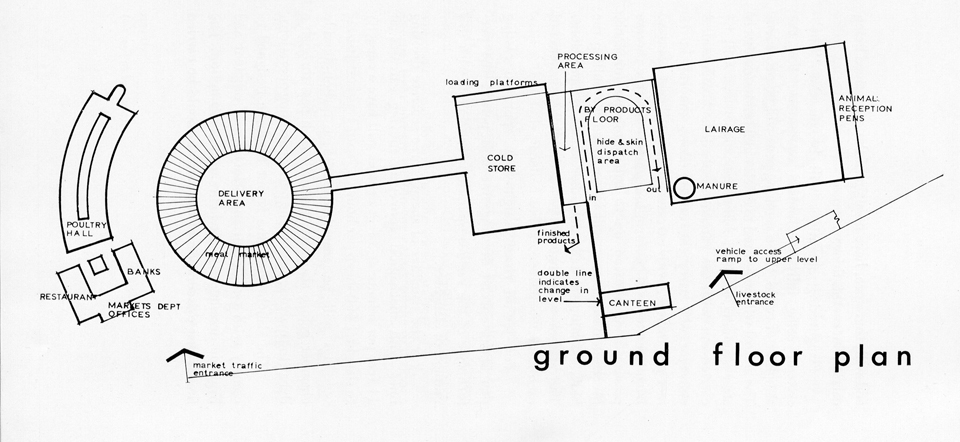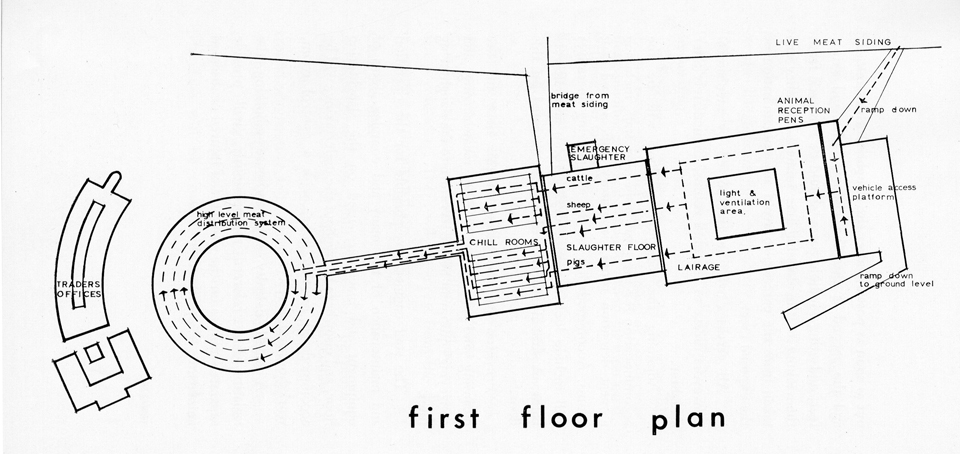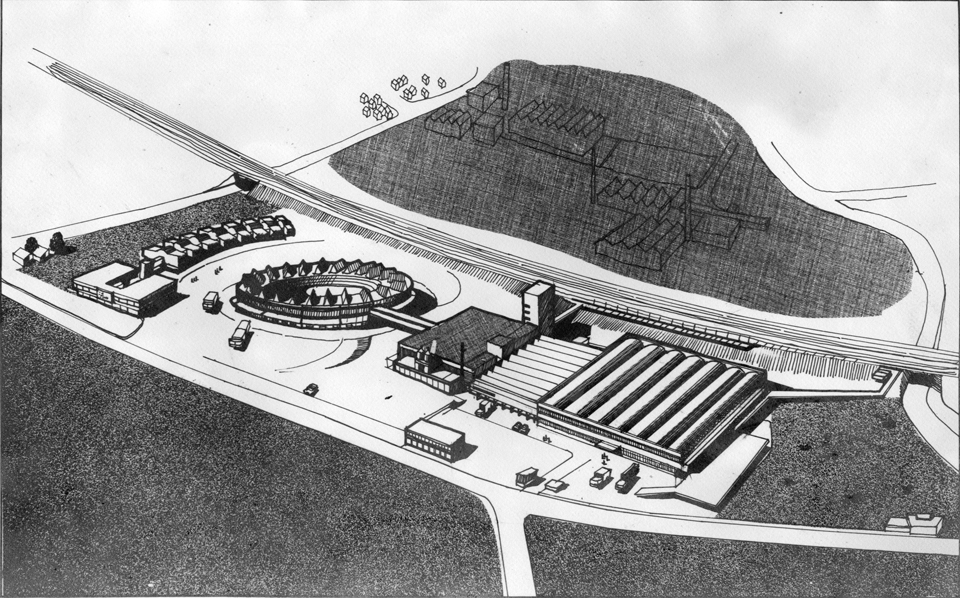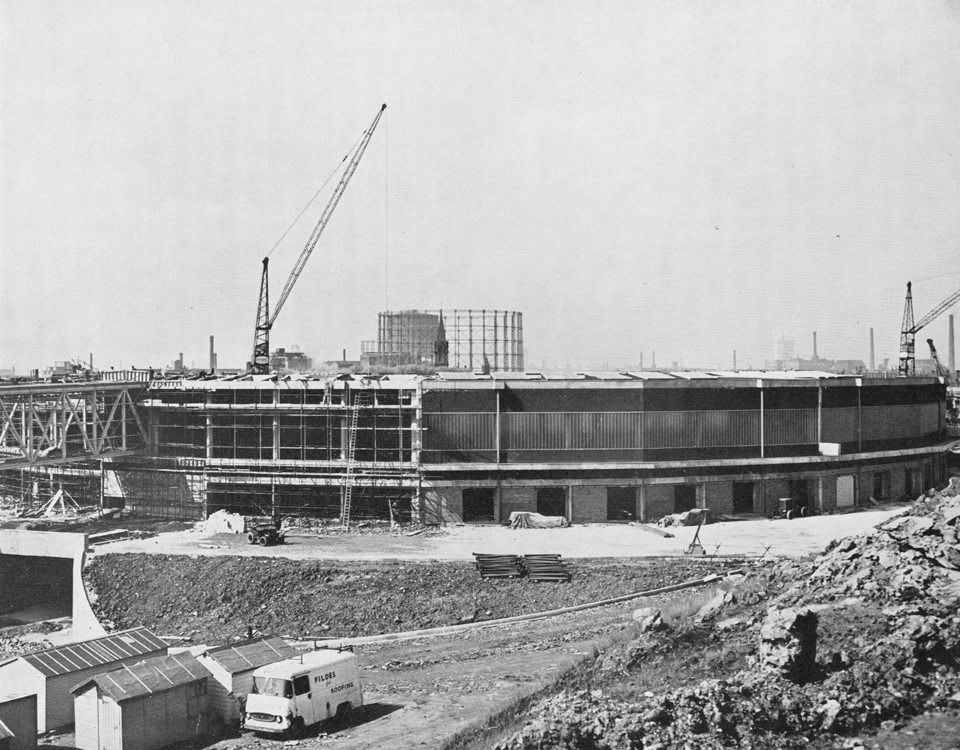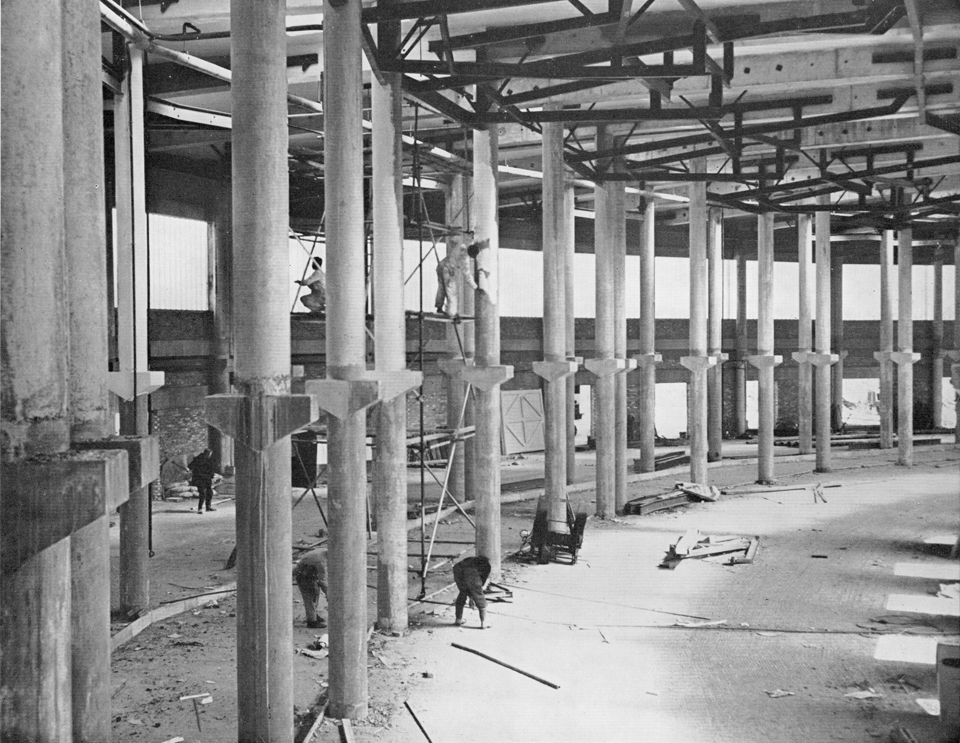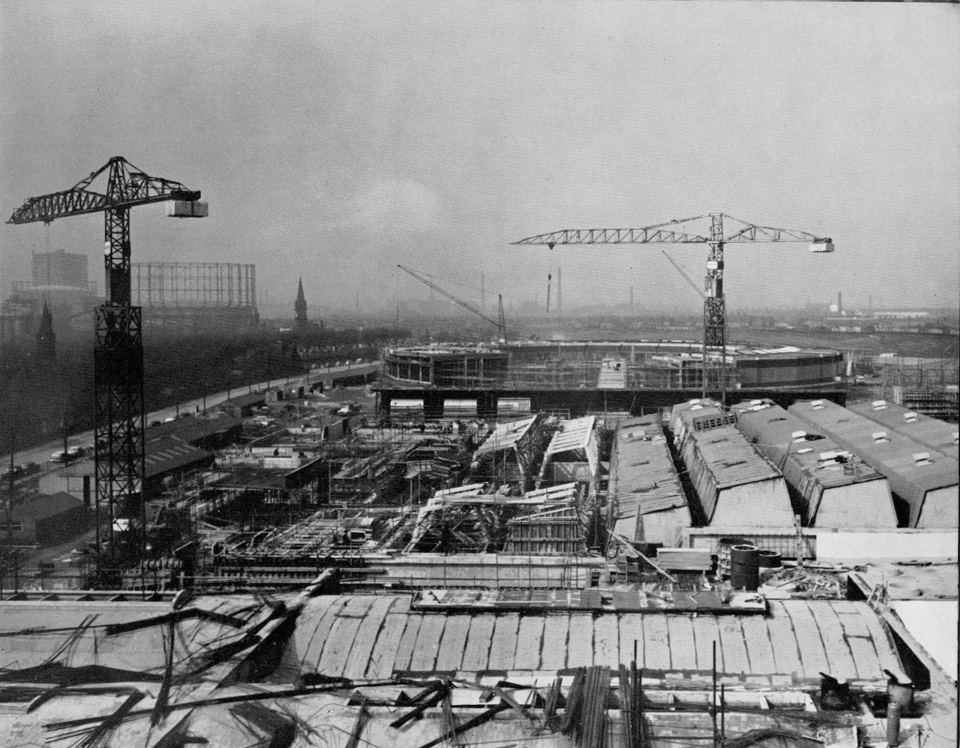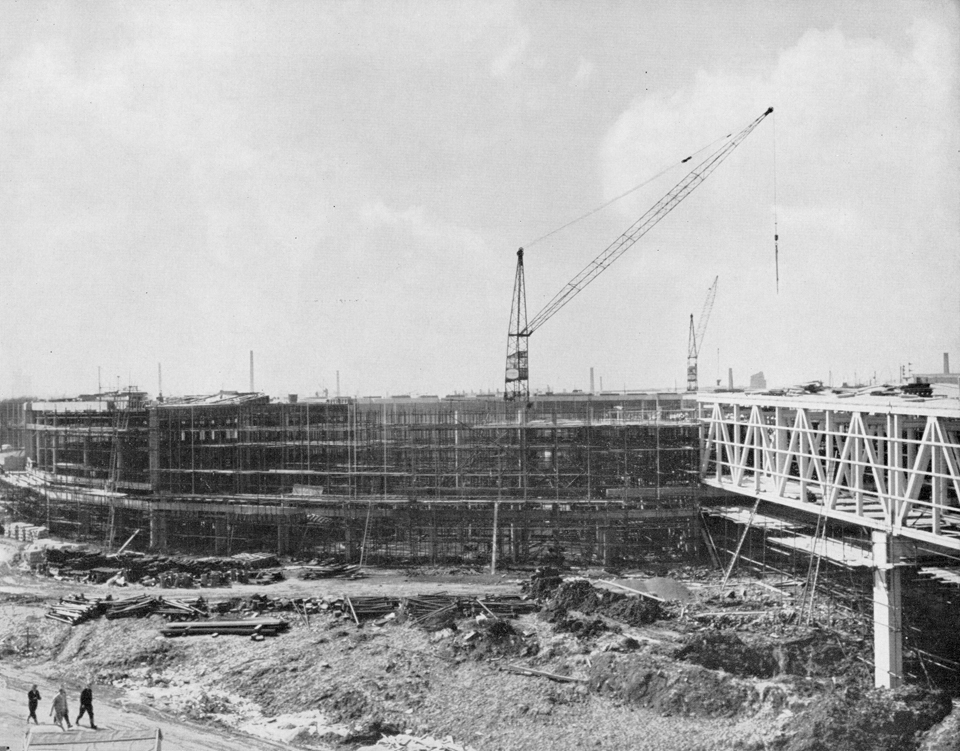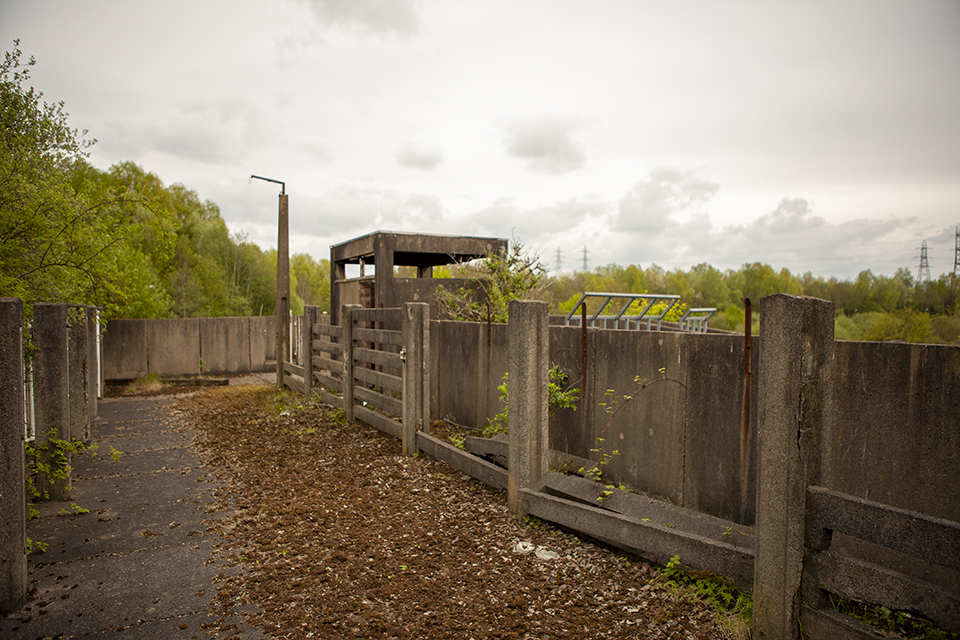City Abattoir and Meat Market
1966
The abattoir was designed by the City Architect's Department under Leonard Cecil Howitt's direction, but by the time its construction was completed, Sidney George Besant-Roberts had succeeded Howitt. The site for this new decidedly modern facility was away from the town centre, north of Philips Park Cemetery in Newton Heath, purportedly too far for some who raised objections. Its advantages were its proximity to the trainline and radial roads and the lack of surrounding residential property. Riverpark Road, where the abattoir was sited had its name changed from Cemetery Road after Mr H. Cole, President of the Manchester, Salford and District Butchers and Meat Traders’ Association, observed that its original name might not encourage trade in meat. Planning permission was granted in 1959, with a three year construction programme at a cost of £2.5m intended to conclude by the end of 1962. The development was to provide a comprehensive self-contained slaughtering and meat marketing undertaking, complete with railway sidings for the delivery of livestock; a mechanical slaughtering system; meat conditioning rooms; cold stores; a wholesale meat market; a poultry hall; restaurant and canteen; banks; and administrative offices. The largely automated processes were to take place in four principal buildings: a lairage able to accommodate up to 1400 cattle, 6000 sheep and 800 pigs; a two-storey block where livestock could be slaughtered, dressed, and kept in cold storage; the market, housing fifty stalls and linked via an automated conveyor belt to the meat stores; and a stand-alone administrative block. Perhaps the most interesting element of this ensemble was the market; a sixteen-sided polygonal structure in which no trader’s stall could be favourably positioned over another. The conveyor belt travelled at high level and vehicular access to the central courtyard of the market was through a tunnel. All of the buildings were designed in a commercial manner, a system build-up of pre-cast elements. For the railway sidings, movement of the animal was the primary focus in its design and construction. A series of parallel passageways separated by concrete panel fences allowed the animals to move along in single file, before being corralled into groups using a series of metal gates that could open and close to create different size enclosures. A concrete control booth was at the junction or pivot point of the ramps, passage and platform. It closed in 2000 as a meat production facility, and is now let as units to a range of businesses and organisations. It had been struggling as a municipal enterprise almost since it was completed as an Act of Parliament changed the landscape for the licensing of the trade.
